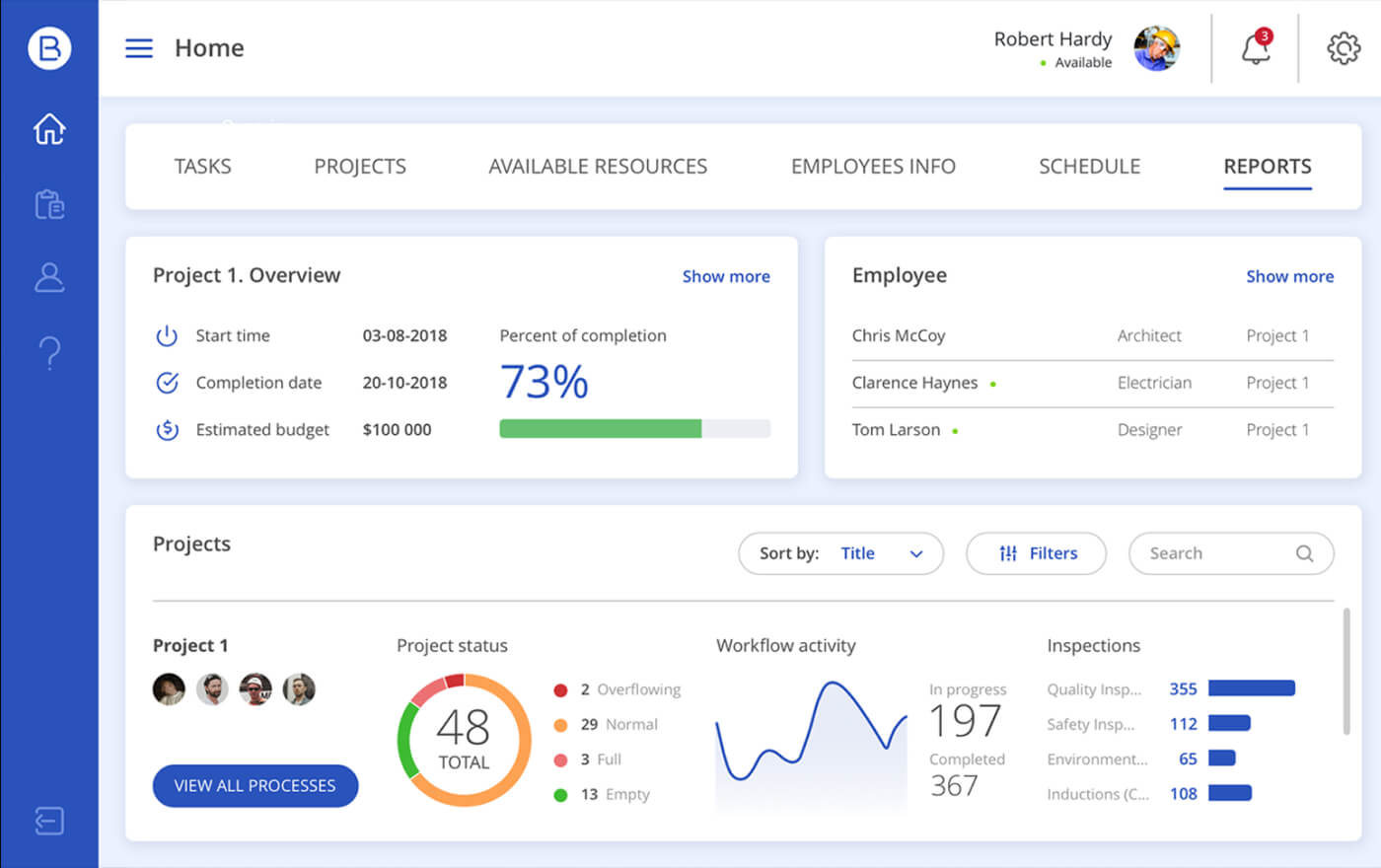Everything About Building Administration Software Program: Changing Task Efficiency
The introduction of building administration software program notes a substantial transition in enhancing project efficiency across the industry. By integrating features such as real-time updates, automated scheduling, and extensive reporting, these tools foster improved collaboration among stakeholders and improve workflows. As organizations increasingly adopt mobile options and advanced technologies like AI and BIM, the possibility for makeover comes to be extra obvious. Comprehending the complexities of these software application services and their implementation approaches is crucial for optimizing their benefits. What challenges and opportunities lie in advance in this progressing landscape?
Summary of Building And Construction Administration Software
Building management software application acts as a crucial tool for simplifying job operations and enhancing cooperation among stakeholders in the building sector. This technology incorporates numerous facets of building and construction projects, including preparation, organizing, source allocation, and budgeting, assisting in a natural method to job monitoring.
With the complexity of contemporary building and construction projects, relying exclusively on typical methods can result in inadequacies and miscommunication. Construction management software application addresses these difficulties by giving a centralized platform where project managers, customers, contractors, and architects can access real-time information. This ease of access promotes transparency and ensures that all parties are aligned on project objectives and timelines.
By automating regular tasks, such as record administration and reporting, it enables project groups to focus on critical decision-making rather than management responsibilities. As the building and construction market proceeds to develop with technical improvements, embracing building management software application becomes vital for professionals looking for to boost efficiency, boost communication, and provide effective projects.
Secret Attributes and Benefits

One more essential feature is automated scheduling, which enhances task timelines and resource allotment. By automating these processes, building and construction monitoring software reduces hand-operated errors and optimizes process, causing prompt task conclusion. In addition, robust reporting and analytics tools offer insights into job performance, allowing managers to make educated decisions based on data-driven examinations.
Expense administration functions likewise play an important duty, aiding groups track spending plans and expenses in genuine time. This ability not only guarantees monetary responsibility but also permits proactive changes, minimizing the threat of spending plan overruns. Moreover, mobile availability equips field crews to access essential details on-site, improving efficiency and responsiveness.
Leading Software Application Solutions Available
What elements should be thought about when picking the ideal building and construction management software? Evaluate the particular requirements of your jobs, consisting of functions such as budgeting, organizing, and paper administration.
Several leading software application solutions stand out in the building management landscape. Procore is very concerned for its comprehensive functions, consisting of job quality, monitoring and safety devices, and financial monitoring abilities.
Additionally, PlanGrid beams with its emphasis on mobile accessibility and real-time collaboration, enabling groups to share updates and blueprints instantly. Autodesk Construction Cloud integrates style and building information, promoting better project sychronisation. Choosing the ideal software program is critical to enhancing job effectiveness, so cautious analysis of these remedies will certainly produce considerable advantages.
Execution Approaches for Success
Successfully implementing construction management software requires a strategic approach to ensure that all staff member are straightened which the shift is smooth. The very first step is to establish a clear vision and purposes for the software program's usage, including all appropriate stakeholders in the planning process. This collaboration fosters buy-in and aids to recognize certain requirements and challenges.
Following, thorough training is necessary. Supplying hands-on sessions tailored to different customer functions will boost effectiveness and confidence. Continuous assistance during the initial stages of application is essential to resolve any type of issues or questions that might occur.
In addition, it is suggested to start a phased rollout of the software, beginning with a pilot project. This permits teams to adjust slowly and gives a chance to gather comments for further improvements before full-blown deployment.
Developing metrics to measure the software application's effect on task efficiency and interaction will help in justifying the investment and highlighting locations for improvement. Cultivating an open society that encourages comments and adjustment ensures the software application system advances alongside the team's requirements, inevitably leading to sustained success in building administration.
Future Trends in Building And Construction Management Software Application

Additionally, the increase of mobile applications is changing on-site administration, allowing real-time interaction and partnership amongst teams. This pattern not only boosts efficiency however additionally makes sure that task updates are conveniently easily accessible, cultivating openness.
Furthermore, the adoption of Building Information Modeling (BIM) is set to expand, allowing for even more thorough task visualization and control. This modern technology assists in lessening errors and improving workflows.
Moreover, sustainability features are coming to be crucial, as companies seek to reduce their ecological effect. Software application that supports environment-friendly building practices and tracks power usage will obtain grip.
Finally, the builders software shift in the direction of cloud-based services will proceed, providing boosted scalability, ease of access, and safety. project management software construction. As these fads unfold, building and construction administration software will play a significantly important role in driving performance and innovation within the market
Conclusion
To conclude, construction administration software program plays a critical duty in enhancing job performance through structured operations and improved partnership amongst stakeholders. The integration of sophisticated attributes such as real-time updates and mobile accessibility assists in reliable communication and reduces mistakes. As the sector increasingly embraces AI, cloud options, and BIM technology, the ongoing development of building and construction monitoring software is expected to support a lot more lasting and reliable building practices, eventually transforming the building landscape right.

Comments on “Maximize Efficiency with Cloud Construction Management Software for Your Projects”